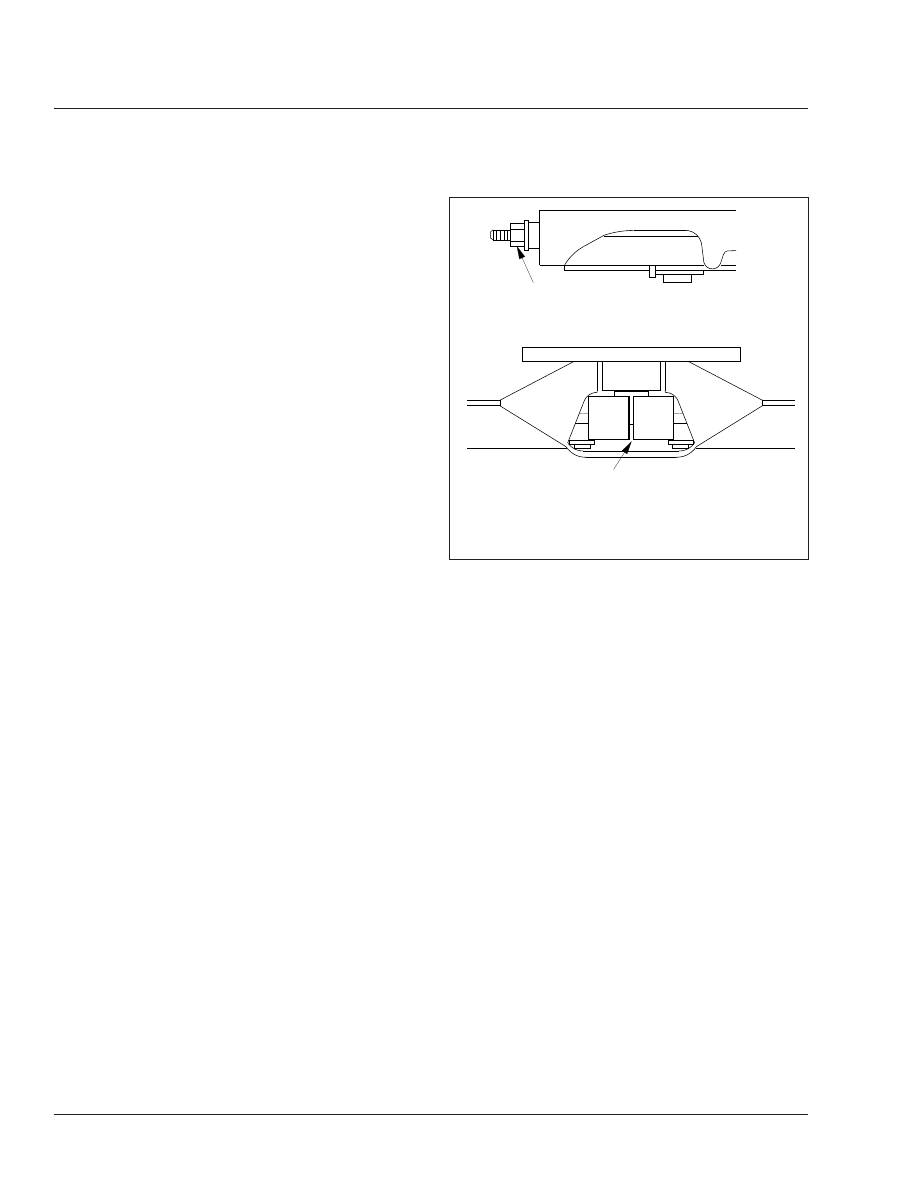Freightliner Coronado 132 / 122SD. Manual - part 13

6.
Check all cotter pins for cracking or damage. Re-
place any cotter pin that shows any signs of
damage.
7.
Check all mounting bolts for signs of fatigue, and
tighten them to the proper torque. For torque
specifications, see Group 00 of the vehicle
Workshop Manual. Inspect all angles, plates, and
brackets for cracks or other damage.
8.
Replace cracked, worn, or damaged parts with
new parts. Replace all loose mounting bolts with
5/8–11 SAE grade 8 bolts, grade C locknuts, and
hardened washers. Do not re-use bolts, nuts,
and washers on fifth wheel mountings.
9.
After inspecting the fifth wheel, lubricate all mov-
ing parts with a chassis or multipurpose grease.
See MOP 31–02 for lubrication instructions.
Holland FW35
1.
Disconnect the tractor from the trailer. For in-
structions, see the vehicle Driver’s/Operator’s
Manual.
2.
Thoroughly steam clean all fifth wheel compo-
nents before inspection.
3.
Check for cracks in the fifth wheel assembly,
mounting brackets, and mounting parts.
4.
Check the fastener torques on the fifth wheel
assembly and fifth wheel mounting. Tighten bolts
and nuts as needed. Replace missing or dam-
aged bolts.
5.
Inspect the fifth wheel for bent, worn, damaged,
and missing parts; replace them as needed with
genuine Holland parts.
6.
Using a Holland Kingpin Lock Tester (Holland
tool number TF-TLN-5001, available through the
PDCs as HLD TFTLN5001), check the operation
of the locking mechanism by opening and closing
the locks. See
7.
After inspecting the fifth wheel, lubricate all mov-
ing parts with a chassis or multipurpose grease.
See MOP 31–02 in this manual for lubrication
instructions.
Fontaine
1.
Disconnect the tractor from the trailer. For in-
structions, see the vehicle Driver’s/Operator’s
Manual.
2.
Thoroughly steam clean the fifth wheel.
3.
Check for cracks in the fifth wheel assembly,
mounting brackets, and mounting parts.
4.
Ensure that both bracket pins are in place and
secured by retainer pins and cotter pins. See
5.
For fifth wheels equipped with bracket liners,
rock the fifth wheel. If it does not rock freely, re-
move the top plate and inspect the bracket lin-
ers. Replace liners that are broken or less than
0.125 inch (3 mm) thick at the top of the liners.
For the liner replacement procedure, see the
Fontaine website,
6.
Check the jaw and stationary jaw for mushroom-
ing, and check that the serrations at the jaw and
wedge are in good condition.
7.
Test the secondary safety lock latch for ease of
operation.
8.
Check for loose nuts or bolts on the fifth wheel
and the mounting. Set a torque wrench to the
maximum torque value for the bolt being
checked, and confirm that the torque is to speci-
fication. Do not loosen the bolt to check the
torque. For torque specifications, see Group 00
of the vehicle Workshop Manual.
04/11/2011
f310887
A
B
A. The nut and washer should be snug against the fifth
wheel.
B. The locks should be completely closed around the
kingpin.
Fig. 3, Holland Fifth Wheel Properly Closed
Frame and Frame Components
31
31/2